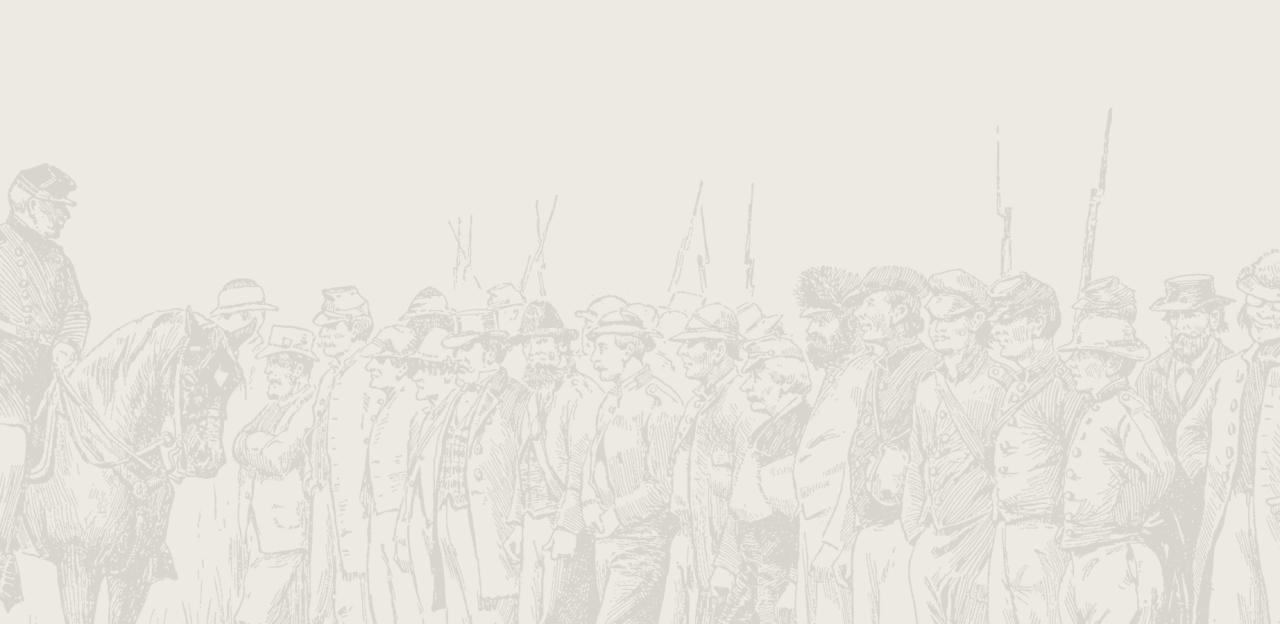Perryville

The Battle of Perryville
Battle of Chaplin Hills
After the siege of Corinth (April 29-May 30, 1862), Jefferson Davis replaced General P.G.T. Beauregard with General Braxton Bragg as the commander of the Army of Mississippi. In turn, Bragg launched an extended campaign that carried Confederate forces from Tupelo, Mississippi, through Mobile, Alabama, into north Georgia, and into the Union-held border state of Kentucky via middle Tennessee. Bragg and other southern leaders hoped to gain support for the southern cause and bring the Bluegrass State into the war on the side of the Confederacy. He also hoped to supply his army and to fill its ranks with Kentuckians. A victorious Confederate army in Kentucky would not only complicate the state’s neutrality but could threaten Union cities and shipping all along the Ohio River.
At first Bragg coordinated his movements with Maj. Gen. Edmund Kirby Smith. Smith was a proponent of the “Heartland Offensive,” but it soon became evident to Bragg that the Floridian had illusions of grandeur and higher command rather than the best interests of the Confederacy in his heart—and the cooperation between the two officers broke down.
As a result of the Confederate incursion into Kentucky, Maj. Gen. Don Carlos Buell and his Union Army of the Ohio broke off their attempts to take Chattanooga, Tennessee, and shadowed Bragg’s army. Buell station his army in Louisville, Kentucky, blocking any Confederate move across the Ohio River.
On October 7, Buell’s 55,000-man army converged on the small crossroads town of Perryville, Kentucky. Union cavalry first skirmished with Rebel infantry where the Springfield Pike crossed Bull Run Creek. As more gray-clad infantry arrived, the fighting became more general on Peters Hill further west on the turnpike. Movement and fighting on both sides were hampered by the lack of water in the area; Kentucky was in the midst of the worst drought in years, and the small pools of water in the nearly dry creek beds around Perryville drew both armies to the area.
At dawn the next morning, fighting reignited around Peters Hill as the Union division of Brig. Gen. Lovell H. Rousseau advanced and met the Confederate battle line. After noon, Brig. Gen. Benjamin F. Cheatham’s Confederate division crossed Doctor’s Creek, striking the Union left flank and forcing it to fall back. When more Confederate divisions joined the fray, the Union defenders made a stubborn stand near the Open Knob along the Benton Road and counterattacked Cheatham’s brigades, but finally fell back with many regiments completely routed. Although his I Corps, commanded by Maj. Gen. Alexander M. McCook, had been fully committed and fought hard all day, Buell did not know of the happenings on the field. An earlier fall from his horse kept the general immobile throughout October 8. During the day’s fight, only minor elements of Buell’s other two corps made contact with the enemy. Even so, McCook’s left flank, reinforced by two brigades, stabilized its line and the Rebel attacks sputtered to a halt. Major General William J. Hardee’s men struck the Union right near Squire Henry Bottom’s family farm, but the undulating terrain and well-placed Union artillery slowed his progress.
Late in the afternoon, a single Rebel brigade under Col. Samuel Powel assaulted Brig. Gen. Phillip H. Sheridan’s Union division on the Springfield Pike but was repulsed and fell back into Perryville. Sheridan’s men pursued, and some skirmishing occurred in the streets of the town as darkness fell. Although he had won a tactical victory, Bragg, short of men and water, withdrew during the night and, after pausing at Harrodsburg, retreated by way of Cumberland Gap into eastern Tennessee. The Confederate Heartland Offensive was over, and the Union would control Kentucky for the rest of the war.


